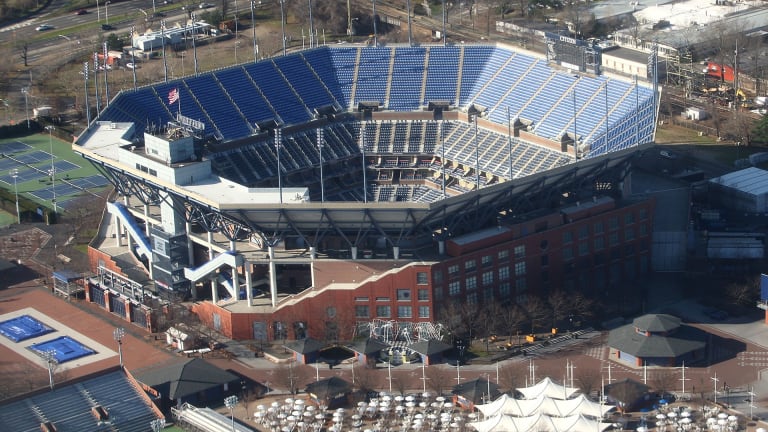Lifestyle
Is Arthur Ashe Stadium sinking? Geological survey sounds the alarm in Queens
By Sep 29, 2023Lifestyle
Game, Set, Recharge: Globe-trotting tennis pros fight jet lag by staying one step ahead
By Apr 19, 2025Lifestyle
Mirra Andreeva belts 'Happy Birthday' song to coach Conchita Martinez in Stuttgart
By Apr 16, 2025Lifestyle
Thorne taps Ben Shelton to launch new on-the-go performance line
By Apr 16, 2025Lifestyle
Alexandra Eala: The reality of travel and difficulty of securing visas with a Philippine passport
By Apr 14, 2025Lifestyle
Carlos Alcaraz to GQ Spain: 'I'm not obsessed with being the best in the world'
By Apr 11, 2025Lifestyle
Rafael Nadal’s shirt from his career Grand Slam-completing victory in 2010 is available for auction
By Apr 10, 2025Lifestyle
Beep, beep! Elena Rybakina has finally gotten her driver's license
By Apr 10, 2025Lifestyle
Jack Draper named global Burberry ambassador
By Apr 05, 2025Lifestyle
Emma Navarro's first stop in Charleston, and more “super niche tennis lessons"
By Apr 02, 2025Lifestyle
Is Arthur Ashe Stadium sinking? Geological survey sounds the alarm in Queens
The ground beneath the massive tennis stadium is subsiding at a rate nearly three times faster than the rest of the city average, according to a NASA-led study.
Published Sep 29, 2023
Advertising

New York City is sinking at a rate of about 1.6 millimeters per year on average, with Arthur Ashe Stadium sinking at 4.1 millimeters per year.
© 2021 Getty Images

Concern for the land beneath Arthur Ashe Stadium led to delays in construction of its roof, which was added in 2016.
© 2009 Getty Images